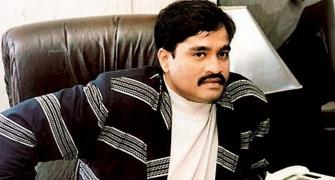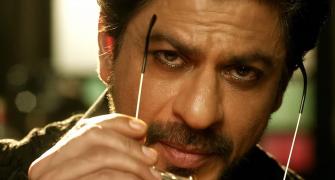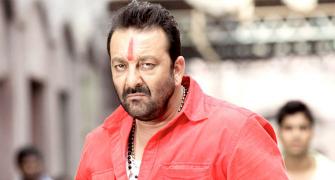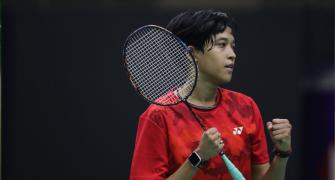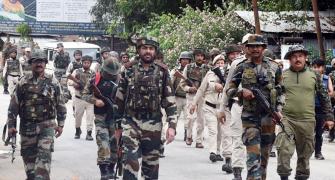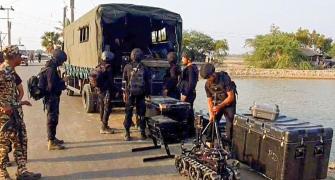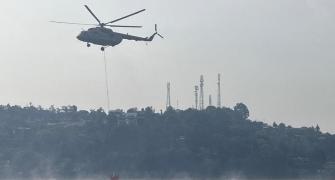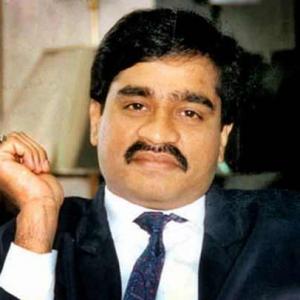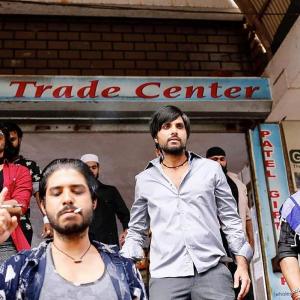'I wasn't motivated to begin with because how do you outdo the biggest encounter?'
'Then, we came across this story about the first-ever encounter.'

Sanjay Gupta isn't too impressed with Ranveer Singh's Don 3 teaser.
It is certainly an opinion that matters, given that the film-maker has made so many Dons come alive in his movies.
From Aatish to Plan, Musafir, Shootout at Lokhandwala, Shootout at Wadala and many more, Gupta has always been interested in the world of cine crime.
"I was just happy that I could fantasise with a gangster drama of my own, there was no intention then of doing anything different or changing the language of film-making," Sanjay Gupta tells Rediff.com Senior Contributor Roshmila Bhattacharya.
From Sanjay Dutt's Aatish to Maya Dolas in Shootout at Lokhandwala and Manya Surve in Shootout at Wadala to Mumbai Saga's Amartya Rao, you have come a long way with dons.
Aatish was what you call a masala movie, a fantasy crime drama.
Never had we seen gangsters wearing Armani suits and firing foreign-made guns before this.
It was a blast, literally.
The Shootout film is what I call 'fictionalised non-fiction'.
With them, and Mumbai Saga, I was steering towards the depiction of the real-life don based on actual research, recreating a world from the '80s and '90s, which was enjoyable in its own way.
I think the transition from daku to don started with Salim Khan and Javed Akhtar's Deewar and Mr (Amitabh) Bachchan's character, Vijay, who was modelled on Haji Mastan who rose from the docks to rule the underworld.
Even the fictionalisation of the character don began with the trio and the iconic Don.
All the great actors, more so in Hollywood, from Al Pacino in Scarface and The Godfather to Robert De Niro in The Godfather Part II, have made the character unforgettable.
How different is the Hollywood don from his Bollywood counterpart?
There's no difference, really. Even Al Pacino's don inhibited a world of make-believe, wearing sharp suits and driving fast wheels.
In a way, this character is aspirational in that everyone enjoys watching a don.
It is good time pass because he has the license to break social rules and deep down, don't all of us wish we could too?

Which was the first don film to impress you as a film-maker?
I have been watching a lot of gangster dramas since I was in college, from Brian De Palma's films to my desi favourites Yash Chopra, Ramesh Sippy and Raj N Sippy.
But as a film-maker, I was first impressed with Mani Ratnam's Nayakan, then Vidhu Vinod Chopra's Parinda.
I was an assistant director then and they changed my mind set in the portrayal of the don and his surroundings.
Then there was Ramu's (Ram Gopal Varma) Satya...

And the film changed you?
It changed all of us.
Ramu announced the film with the posters gracing the covers of the film magazines.
They were daring and compelling.
I still remember one, of a dead body, a hand with a gun in the foreground and some twisted cops in the background, in the aftermath of what was an encounter killing, with 'Satya' splashed in red blood across it.
Even before its release, just looking at the posters, I knew this was no ordinary gangster drama. It was new and different.
And after the film came out, the writing, the performances, the background music, everything just blew my mind.

What was your mindset when you made Aatish?
(Laughs) I was too young to have one.
I was just happy I was making a big budget film, that I could fantasise with a gangster drama of my own, there was no intention then of doing anything different or changing the language of film-making.
It was only in 2002-2003, when on a flight from Delhi, that flipping through a magazine, I came across an article on 10 years of the shootout in Lokhandwala (north west Mumbai).
That's how the idea of the first Shootout film was born...
Why did it take you six years to come up with Shootout at Wadala in 2013?
The gap proves that it wasn't made to cash in on the success of Shootout at Lokhandwala.
Actually, I wasn't motivated to begin with because how do you outdo the biggest encounter?
Then, we came across this story about the first-ever encounter.
What happened for the Mumbai police to kill and not arrest Manya Surve to start the trend of encounter killing made for an interesting story.
We took real incidents and wove them into a commercial screenplay to make Shootout at Wadala.

The dons in both the films were poles apart...
Yes, Vivek Oberoi's Maya Dolas was completely unhinged, with no romantic interest.
He was a bad guy who loved bad s**t.
John Abraham's Manya Surve was more restrained.
Even as actors, they are different, John always understated while Vivek plays to the gallery.
But both performances are memorable.

Eight years after Shootout at Wadala, Mumbai Saga arrived with John playing another criminal, Amartya Rao Naik, inspired by Amar Naik, who was very different from the other two.
Mumbai Saga narrates the story of how Bombay became Mumbai after the mills.
When I'm writing, I don't think about what I have done before and how to make this different from that.
I let the screenplay dictate the character, that's the driving force.


